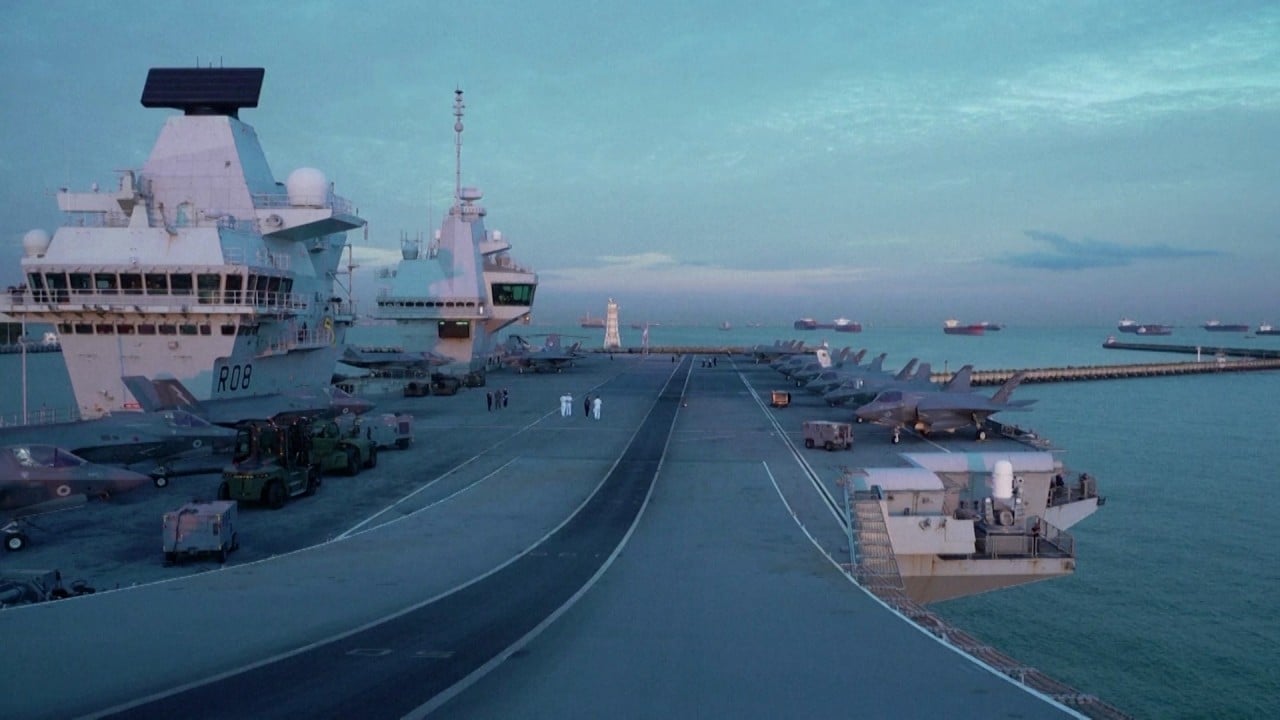
US stepping up operations in South China Sea, researchers say
- Think tank says the US is carrying out dozens of reconnaissance flights each month and there has also been an upsurge in naval activity
- Number of operations means there is an urgent need for a code of conduct to avoid accidents, according to one analyst
The number of reconnaissance flights in October was down from the 62 recorded in September, but the think tank said other US military operations in the South China Sea were intensifying.

01:44
British warship Queen Elizabeth makes Singapore stop to reaffirm Asia presence
Wu Shicun, president of China‘s National Institute for South China Sea Studies, said the US has made more than 500 reconnaissance flight over the South China Sea this year – a total that rises to over 2,000 when operations over the Yellow and East China Seas are added.
Last year it carried out just under 1,000 flights, according to the South China Sea Probing Initiative.
Wu said the risk of accidents between China and the US was increasing, calling on both sides to speed up discussions about a code of conduct.
China’s security ‘endangered by 2,000 US spy missions this year’
Wu recalled the 2001 incident when a US reconnaissance plane collided with a Chinese fighter, killing the Chinese pilot and forcing the Americans to land on Hainan island.
“If there is another collision in the South China Sea, just like what happened in 2001, it would be catastrophic given China‘s current military and national strength,” Wu told an international forum on Wednesday.
In addition to the Carl Vinson carrier strike group, the South China Sea Probing Initiative said the US has sent three other carrier strike groups – the Theodore Roosevelt, Nimitz and Ronald Reagan – to the South China Sea this year.
Together with two amphibious assault vessels, the USS Makin Island and USS Essex, US navy vessels crossed the South China Sea 11 times this year, the think tank said.

“US military deployment over the South China Sea has been increasing since 2009. Such deployment intensified this year compared with last year,” Hu Bo, director of the think tank, told state broadcaster CCTV as saying.
The confrontations between China and the US over the South China Sea has been going on for years. Tensions between the two nations have escalated, with Beijing protesting as the US teamed up with allies including Britain, Germany and Canada to increase their military presence over the South China Sea.
After sub crash, US intentions in South China Sea ‘have to be questioned’
Washington said those operations are necessary to ensure navigational freedom in the disputed waters, but Beijing said they are a violation of its sovereignty.
Wu said as both China and the US have used more submarines and underwater drones, it is important to include those weapons in the code for unplanned encounters at sea.
“This is an urgent need to establish rules that include air, surface, and underwater, including conventional submarines, nuclear submarines, and unmanned submarines, otherwise there will be accidents in the South China Sea,” he said.


